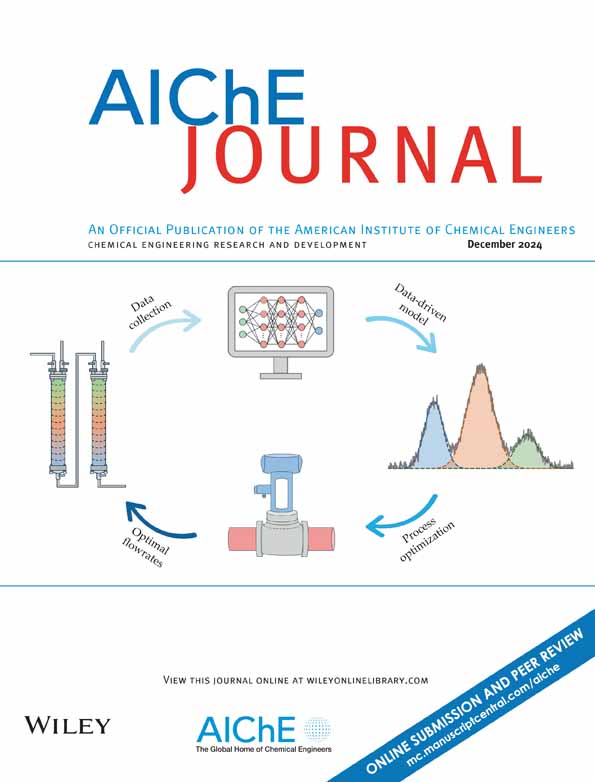Bridging the gap between periodic domain and fluidized bed
IF 4
3区 工程技术
Q2 ENGINEERING, CHEMICAL
引用次数: 0
Abstract
To understand the impact of macroscale constraints on the mesoscale drag modeling, we performed fine‐grid two‐fluid model simulations in both the periodic domain and realistic fluidized beds, and used the artificial neural networks to identify the key markers for the drag force. It is found that only local coarse‐grid variables are not sufficient, whereas inclusion of the drift velocity as a sub‐grid marker facilitates a high predictive performance when translating between the periodic domain and realistic fluidized beds. The closures of the drift velocity are, however, highly dependent on the solids volume fraction, and those using only coarse‐grid variables are not as successful as using fine‐grid data. More efforts are needed to seek a generic closure of the drift velocity. In a broader sense, combining the mesoscience and machine learning enables us to identify the key factors in the theory building (here, mesoscale modeling) with the aid of connections built via machine learning.填补了周期畴与流化床之间的空白
为了了解宏观尺度约束对中尺度阻力模拟的影响,我们在周期域和现实流化床中进行了细网格双流体模型模拟,并使用人工神经网络识别阻力的关键标记。研究发现,仅局部粗网格变量是不够的,而包含漂移速度作为子网格标记有助于在周期域和实际流化床之间转换时提高预测性能。然而,漂移速度的闭包高度依赖于固体体积分数,而那些只使用粗网格变量的数据并不像使用细网格数据那样成功。需要更多的努力来寻求漂移速度的一般封闭。从更广泛的意义上讲,结合中尺度科学和机器学习使我们能够通过机器学习建立的联系来识别理论构建(这里是中尺度建模)中的关键因素。
本文章由计算机程序翻译,如有差异,请以英文原文为准。
求助全文
约1分钟内获得全文
求助全文
来源期刊

AIChE Journal
工程技术-工程:化工
CiteScore
7.10
自引率
10.80%
发文量
411
审稿时长
3.6 months
期刊介绍:
The AIChE Journal is the premier research monthly in chemical engineering and related fields. This peer-reviewed and broad-based journal reports on the most important and latest technological advances in core areas of chemical engineering as well as in other relevant engineering disciplines. To keep abreast with the progressive outlook of the profession, the Journal has been expanding the scope of its editorial contents to include such fast developing areas as biotechnology, electrochemical engineering, and environmental engineering.
The AIChE Journal is indeed the global communications vehicle for the world-renowned researchers to exchange top-notch research findings with one another. Subscribing to the AIChE Journal is like having immediate access to nine topical journals in the field.
Articles are categorized according to the following topical areas:
Biomolecular Engineering, Bioengineering, Biochemicals, Biofuels, and Food
Inorganic Materials: Synthesis and Processing
Particle Technology and Fluidization
Process Systems Engineering
Reaction Engineering, Kinetics and Catalysis
Separations: Materials, Devices and Processes
Soft Materials: Synthesis, Processing and Products
Thermodynamics and Molecular-Scale Phenomena
Transport Phenomena and Fluid Mechanics.
 求助内容:
求助内容: 应助结果提醒方式:
应助结果提醒方式:


